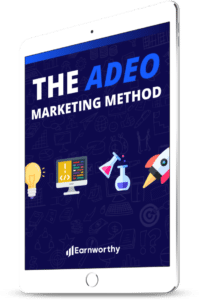A landing page is one of the most crucial aspects of your online marketing campaign. If it is poor, customers that arrive on the page are likely to leave soon after, thus costing you money! Make sure your landing pages are ready to convert by avoiding these 10 common landing page mistakes.
1. Too much clutter
Often a landing page is filled with unnecessary details. Cut out the clutter! The only thing your landing page needs to do is make a potential customer take a desired action, turning them into a lead or customer. Use a clean, simple design, making it easier for a potential customer to act.
Social media icons, excessive navigation links, and widgets are some of the comment page elements that you might want to consider stripping away when building a landing page.
2. Weak headlines
Landing page headlines are critical as they determine whether a visitor will continue or not. Sure it is easy just to slap a couple of words together for your headline but instead, take the time to think it through.
A headline should stand out, get a potential customer’s attention and make them act. Headline writing is an art in itself and until you master it, be sure to test various options and see how they perform.
Another quick tip – use the typical language of your audience. Think in terms of what a potential customer might type into a search engine rather than over thinking your word choice.
3. Confusing or missing USP
A landing page needs a unique selling proposition (USP). The USP should be the first thing a company identifies and the first thing a visitor sees. A USP is the focal point of your product or service that makes it stand out from your competitors.
Don’t confuse the unique selling point with a call-to action (CTA). This is one of the most common landing page mistakes. The main selling point is your USP, while the call-to-action makes a potential customer act because of their interest in your USP.
4. Missing or ineffective CTA
Speaking of calls-to-action, your CTA is a crucial piece of the conversion puzzle. Your landing page may already have one, but its effectiveness might be reduced for the following reasons:
It’s not clearly visible. Simple techniques can make your CTA more prominent. Try contrasting colors between the CTA button and the rest of the landing page. Don’t be afraid to tweak it so it catches the eye–big, bold, and difficult to miss.
You’ve chosen the wrong wording. Your CTA must be easy to understand and compelling enough for someone to want to take action. Be direct. Use action words. Reinforce your CTA with supporting statements that remind your visitor of exactly why they should act and what they’ll get when the do.
5. No list of benefits
Does your landing page clearly list the benefits your customers will reap if they buy your product or sign up for your service? If not, you have a problem. Visitors want to know what is in it for them; front and center.
You can tell them about your company and how great it is on the “About Us” page. Focus your landing page on how what you have is going to benefit them. List those benefits clearly.
6. Too much industry lingo
Copy is also a crucial aspect of your landing page, and not only when it comes to the headline. The language style you use can scare off visitors; mainly if it’s industry-specific lingo they don’t know. Be sure to use words that potential customers will search for and easily understand.
7. No social proof
If you’re landing page has no social proof, you are losing money. Customer testimonials and reviews have been found to influence buying behavior, with 67% of consumers stating reviews impact their purchasing decisions.
People are more likely to buy a product or service if others have something good to say about it, and according to a survey by Bright Local, 88% claim to trust online reviews as much as a personal recommendation.
8. Complicated forms
If your landing page includes any forms, they should be kept as simple as possible, especially if potential customers are required to fill them in. Minimize the number of fields they need to fill in and condense the number of pages they have to click through.
As noted digital marketer Neil Patel reminds us, a company named ImageScape reduced their form fields from 11 to 4 and their conversions improved by 120%!
Remember, keep your forms as straightforward and streamlined as possible. You don’t want to create hurdles for your visitors on the way to the finish line. That said, forms are an excellent way to generate leads as long as they are kept simple.
9. Insufficient images
Walls of text do not make for a great or engaging landing page, as humans process images 60,000 times faster than text.
With a short window to engage visitors, images are critical. They should help to showcase your products, be visually appealing, fit in with the overall flow of the page and finally, make potential customers want to engage further – leading to the CTA.
But one final note about images. Be careful not to accidently distract the eye from the call-to-action with a particular image. Images on your landing pages should support your CTA, not take away from it.
10. Not testing your page
Finally, if you are not testing your landing page, you are missing the opportunity to assess and improve it. There are many tools available to do this including A/B testing software, heatmaps and other analytics platforms.
Some of my favorite tools in this department include Instapage (for running A/B tests), Hotjar (for heatmaps, recordings, and analytics), and UsabilityHub (for user testing feedback).
Continuously test and improve your page based on your findings.
What do you think of these 10 landing page mistakes?
Well, there you have it. By avoiding these ten common landing page mistakes, you will be on the path to more conversions.
I hope you found this list helpful. I’d love to hear how you implement these tactics. Have you identified and fixed any aspects of your landing page that boosted your sales? Are there any pitfalls you would add that weren’t mentioned?
Share your thoughts below or on Twitter and let’s get optimizing!





